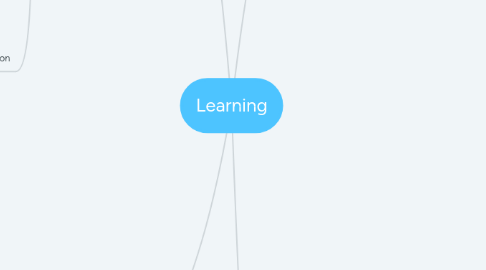
1. Motivation
1.1. Intrinsic Motivation
1.1.1. Self Determinism
1.1.1.1. Autonomy
1.1.1.2. Relatedness
1.1.1.3. Competence
1.1.2. Expectancy-Value Theory
1.1.2.1. Value
1.1.2.1.1. Attainment Value
1.1.2.1.2. Intrinsic Value
1.1.2.1.3. Utility Value
1.1.2.1.4. Cost Value
1.1.2.2. Expectancy
1.1.2.2.1. Outcome Expectancies
1.1.2.2.2. Efficacy Expectantions
1.1.3. Self Efficacy
1.1.3.1. Performance Experience
1.1.3.2. Social Persuasion
1.1.3.3. Imaginal Experience
1.1.3.4. Physical and Emotional Experience
1.1.3.5. Vicarious Experience
1.1.3.5.1. Role Models
1.1.3.6. Collective Efficacy
1.1.3.7. Perseverance
1.1.3.8. Self-Regualtion
1.1.3.9. Growth Mindset
1.2. Extrinsic Motivation
2. Teaching
2.1. Learning Aids
2.1.1. Proximity
2.1.2. Clear and relevant
2.1.3. Actionable knowledge
2.1.4. Minimize prior knowledge
2.2. Learning Objectives
2.2.1. Measurable
2.2.2. Meaningful
2.3. Forms of Learning
2.3.1. Didactics
2.3.1.1. Formal Learning
2.3.2. Doing
2.3.2.1. Experiential Learning
2.3.3. Discovery
2.3.3.1. Informal Learning
2.3.4. Discourse
2.3.4.1. Social Learning
2.3.5. Observational Learning
2.3.6. Associative Learning
2.3.6.1. Operant Conditioning
2.3.6.1.1. Punishment
2.3.6.1.2. Reinforcement
2.3.6.2. Classical Conditioning
2.3.6.2.1. Little Albert
2.4. Instructional Self Efficacy
2.4.1. Persistence with students
2.4.2. Apt to develop activities
3. Challenges
3.1. Learning Gaps
3.1.1. Knowledge Gaps
3.1.2. Skill Gaps
3.1.3. Motivation Gaps
3.1.4. Habit Gaps
3.1.5. Environmental Gaps
3.1.6. Communication Gaps
3.2. Directed Attention Fatigue
3.2.1. Task Switching
3.2.1.1. Less efficient
3.2.1.2. Shallower learning
3.2.2. Multi-tasking
3.3. Sleep Deprevation
3.3.1. Shortened attention span
3.3.2. Negative impact on memory consolidation and problem solving
3.3.3. Poor judgement
3.4. Cognitive load
3.4.1. Intrinsic Cognitive Load
3.4.1.1. Appropriate challenge level
3.4.2. Extraneous Cognitive Load
3.4.2.1. Split attention principle
3.5. Habits
3.5.1. Cues
3.5.1.1. Time
3.5.1.2. Location
3.5.1.2.1. Habit discontinuity effect
3.5.1.3. Emotional state
3.5.1.4. Environment
3.5.1.5. Habit stacking
3.5.2. Routines
3.5.2.1. Unconscious
3.5.2.2. Conscious
3.5.2.3. If-then plans
3.5.3. Rewards
3.5.3.1. Reward pathway
3.5.4. Intention-action Gap
4. Memory
4.1. Information Processing Theory
4.1.1. Sensory Memory
4.1.1.1. Habituation
4.1.1.1.1. Variability
4.1.1.1.2. Massed practice
4.1.1.2. Attention
4.1.1.2.1. Chunking
4.1.2. Short-term Memory
4.1.2.1. Encoding
4.1.2.1.1. Levels of Processing Theory
4.1.2.2. Maintenance Rehearsal
4.1.3. Long-term Memory
4.1.3.1. Retrieval
4.1.3.1.1. Retrieval practice
4.1.3.2. Metacognition
4.1.3.2.1. Metacognitive Knowledge
4.1.3.2.2. Metacognitive Regulation
4.1.4. Cognitive Domain
4.1.4.1. Bloom’s Taxonomy
4.1.4.1.1. Remember
4.1.4.1.2. Understand
4.1.4.1.3. Apply
4.1.4.1.4. Analyze
4.1.4.1.5. Evaluate
4.1.4.1.6. Create
